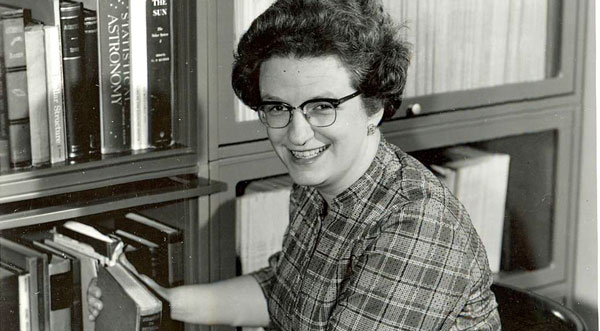Mother of Hubble space telescope: Who is Nancy Grace Roman?
As NASA's first female administrator, Roman has been a pioneering leader in science, especially among young women.

The Hubble Space Telescope came into the spotlight again when Nancy Grace Roman, the 'mother of the Hubble telescope, passed away at the age of 93 in 2018. The Hubble Space Telescope was launched into space in 1990, ushering in a new era in astronomy. Along with opening the door to many new inventions, it also pioneered many new inventions.
Nancy Grace Roman (1925-2018), NASA's first chief astronomer, is known as the 'Mother of Hubble.' In a time when women were discouraged from studying math and science, Roman became a research astronomer and was instrumental in taking NASA's Hubble Space Telescope from an idea to reality and establishing NASA’s program of space-based astronomical observatories.
Nancy Grace's career journey, which extends to administratorship at NASA, has been a source of inspiration for all women. She even said in an interview: “From the beginning, we were taught that a woman cannot be an astronomer. And my guidance counselor looked at me and said, 'Why would a woman want to study math instead of taking Latin?'" Roman never listened to those who didn't believe her, and NASA became her home.
Roman was born in Nashville, Tennessee in 1925, and died in 2018. When She was in seventh grade, she decided she wanted to study astronomy.
Roman, who continued her doctorate at the University of Chicago after studying astronomy at Swarthmore College in the United States, made a mark in history as the first female administrator of NASA in 1959. The scientific world will always remember and miss this important woman in time. Roman, whose father is a geophysical scientist, was unaware that she would become interested in science when she went to see the northern lights with her father. Her parents' interest in science was her destiny in life. Throughout her career, she has worked to solve the mysteries beyond the atmosphere surrounding the Earth and research technologies that can be used in these studies.
Roman, the mother of the Hubble Space Telescope, has organized a wide variety of campaigns to finance her research. She tried to persuade people to donate to scientific discoveries for the price of a movie ticket.
Contribution to science
The first successful space mission was recorded as the launch of NASA's Satellite Solar Observatory-1 (OSO). However, her biggest contribution to science is known as sending the Hubble Space Telescope into space. 10 years after her retirement, Hubble was launched into space in 1990.
Roman conducted research on Sun-like eye stars. She realized that these stars can be classified into two categories in terms of their chemical composition and their motion in the galaxy. Her discovery here was that stars composed of hydrogen and helium move faster than stars composed of other elements. Another discovery was to find that not all stars are the same age. This idea was proven by comparing the hydrogen values of the low dispersion spectra in stars.
Nancy Roman (1925-2018)
Astronomer / "Mother of Hubble"
https://solarsystem.nasa.gov/people/225/nancy-roman-1925-2018/
